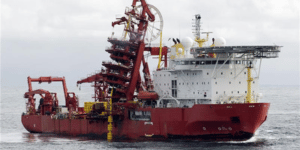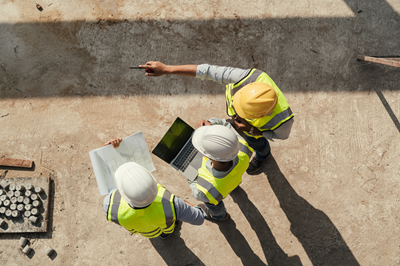
The offshore market and the subsea sector are witnessing an upswing due to the rise in commodity prices and the potential it offers for operators aiming to optimise existing assets. In the current offshore operations landscape, with an emphasis on environmental, social, and governance performance, subsea technology has an increasingly vital role to play. Subsea tiebacks, in particular, present opportunities to enhance asset productivity while minimising environmental impact on an incremental production-per-barrel basis.
This blog provides an overview of the current trends and challenges in subsea systems and hardware, focusing on optimising subsea developments, improving efficiency, and addressing the industry's push for standardisation and global applicability.
Speed of Asset Delivery
One of the main concerns in subsea developments is the speed of asset delivery. Rapid delivery of subsea assets can significantly contribute to reducing project costs and minimising downtime in offshore operations. Advances in subsea hardware design, manufacturing techniques, and supply chain management are critical for achieving faster asset delivery. Innovative technologies, such as modular subsea equipment and digital twins, can also contribute to accelerating the deployment of subsea systems.
System Reliability
Reliability is a crucial factor in the success of subsea operations. Unplanned downtime and equipment failures can result in significant financial losses and environmental risks. Ensuring the reliability of subsea systems and hardware requires continuous improvement in design, materials, and maintenance practices. Machine learning and advanced analytics can be employed to predict potential failures, enabling operators to perform preventive maintenance and reduce the likelihood of system breakdowns. Moreover, integrating advanced materials and coatings can enhance the durability and corrosion resistance of subsea hardware.
Data and Information Management
Efficient data and information management are essential for optimising subsea developments. Real-time data collection and analysis can help operators monitor the performance of subsea systems, identify potential issues, and make informed decisions. Digital technologies, such as Internet of Things (IoT) devices and cloud-based platforms, can facilitate seamless data transfer and storage, enabling remote monitoring and control of subsea operations. Furthermore, data analytics and machine learning can provide valuable insights into system performance and maintenance requirements, ultimately improving efficiency and reducing costs.
Project Repeatability
Project repeatability is a key aspect of subsea engineering aimed at improving efficiency. By standardising designs, processes, and best practices across different projects, operators can benefit from economies of scale and reduce overall project costs. Modular subsea systems, standardised hardware components, and consistent project management approaches can all contribute to achieving project repeatability. Additionally, lessons learned from mature subsea areas can be applied to new developments, further enhancing repeatability and efficiency.
Standardisation in Subsea Project Management
The push for standardisation in subsea project management is a high priority within the industry. Standardisation not only refers to hardware and components but also to the overall approach to managing subsea projects. Standardising project management practices, such as risk assessment, procurement, and quality assurance, can help streamline processes and minimise inefficiencies. Collaboration among operators, contractors, and regulatory bodies is essential to develop and implement standardised guidelines and best practices for subsea project management.
Building on Learnings from Mature Subsea Areas
Mature subsea areas provide valuable insights and lessons learned that can be applied to new developments. By focusing on subsea reliability, operators can address the global nature of subsea challenges while maintaining a specific focus on local issues. Sharing knowledge and experiences from successful projects in mature subsea areas can contribute to the development of best practices, innovative technologies, and improved regulatory frameworks for the industry as a whole.
Future Outlook
Looking ahead, the subsea sector is expected to continue its evolution, driven by technological advancements, increased collaboration among stakeholders, and the need for sustainable and efficient offshore operations. The development and adoption of innovative technologies, such as autonomous underwater vehicles, remote monitoring systems, and artificial intelligence, will play a significant role in further optimising subsea developments and operations.
Moreover, the growing focus on environmental, social, and governance performance will encourage the industry to explore and adopt cleaner and more sustainable subsea technologies. This may include advancements in renewable energy integration, carbon capture and storage solutions, and environmentally friendly materials for subsea hardware.
As the offshore market continues to grow and evolve, the subsea sector will play an increasingly important role in ensuring the long-term success and sustainability of offshore operations. By addressing the current challenges and embracing the opportunities presented by technological innovation and industry collaboration, subsea systems and hardware will remain a vital component of the offshore energy landscape.
Conclusion
Subsea systems and hardware play a crucial role in the ongoing growth and optimisation of offshore operations. By addressing key challenges, such as speed of asset delivery, system reliability, data and information management, and project repeatability, the industry can continue to improve efficiency and reduce costs. Standardisation in subsea project management and building on learnings from mature subsea areas are also essential for ensuring the success of future offshore projects.





